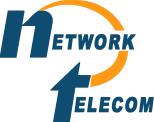Unified Communications: What It Is and How to Reap Its Benefits
In recent years, unified communications has become a helpful service to keep remotely located workers connected. However with the recent pandemic, the need for effective unified communications has become a vital necessity as almost overnight, businesses have had to shift to remote work for the vast majority of their employees.
So what exactly is unified communications, what can it do for your business and how can you use it to its full potential to maximize your business’s effectiveness? Read on to find out.
What Is Unified Communications?
Simply put, unified communications refers to how we connect the various systems we use in the digital workplace as well as the collaboration tools themselves. In the past, workers were confined to a specific desk, with a phone and computer screen; but that scenario has vastly changed with the rapid growth of technology that allows you to work remotely and share your skills and resources across the globe.
Unified communications can provide you with the direct support, flexibility, and connectivity that you need no matter where you are working from. The problem is that there are so many different types of communication tools available to you, that it can be quite daunting to know what to use, how to use it, and which systems will be the most effective for your business.
Unified communications refers to how we connect the various systems we use in the digital workplace as well as the collaboration tools themselves
Flexibility of Unified Communications
One of the great benefits of unified communications (UC), is its flexibility. Most unified communications companies let you pick and choose the elements that you need and will want to use and then you just pay for the corresponding licences. You often have the choice of a bundle of services that end up being cheaper to purchase as opposed to paying for each individual component.

With UC you can choose the elements that you need and will want to use
Elements of Unified Communications
Unified communications are made up of a large collection of elements that you can use to connect and share with others. There are a wide variety of business communications that can be integrated to form your unified communications.
The following is a list of components that could make up your UC solution. You don’t have to have all of these elements to have unified communications though.
Instant messaging is a text-based form of communication where two people have one conversation in an online chatroom using their mobile device or computer.
Unified messaging integrates features such as voice, fax, and email messages into your Inbox. It allows you to access different types of messages in one location.
Audio conferencing is similar to a traditional phone call in that you just have audio for your call; however, with audio conferencing you don’t dial each other’s phone number. Instead all of the people on the conference call dial into a central system that connects the participants together.

Video conferencing is a great collaboration tool
Unlike a web conference which is basically a one-way communication platform, video conferencing is designed for two-way or more than two-way communication. Every person on the call can talk and see each other. It is a great method for collaboration.
Mobility means that you can access your communication services in different places and on different devices. For example, you can be at home, but you are able to sign in and check your work emails from your tablet. In addition, you could have calls that come to your work phone transferred to your cell so you can answer them and appear to actually be in your office.
Call control, also known as call processing, refers to the software used in telephony that “decodes addressing information and routes telephone calls from one end point to another.” It is also used to provide services such as “call waiting” and “call forward on busy.” Because call control systems are so complex, containing millions of lines of high-level code, they require many thousands of person years to develop.

Call control provides services such as “call waiting” and “call forward on busy.”
Presence information is a feature of unified communications that lets users know the availability of another user. If you want to communicate through chat, voice, video or other method, you can set your status to show that you are available.
Collaboration tools allow users to work together or “collaborate” at the same time. These tools include features such as:
- Virtual white boards
- Real time audio and video conferencing
- Enhanced call control
The following video shows you how a virtual whiteboard works in a Zoom meeting.
Virtual whiteboards are an effective and easy-to-use collaboration tool
Multimodal communications means using multiple ways of communicating at the same time. A big advantage of unified communications and what makes it so powerful is that it allows you to have seamless multimodal communication in your workplace.
For example you can host a video conference call with numerous participants that lets you chat to various people while the call is happening, share documents with each other, and show PowerPoint presentations. The combinations are endless.
IP telephony refers to voice communications that use the Internet instead of a regular landline. It is also referred to as VoIP (Voice over Internet Protocol). Unlike landline phone calls, you don’t require a public-switch telephone network in order to call someone.
Instead IP telephony uses broadband connections over the Internet. The following video explains how IP telephony works.
IP Telephony (VoIP) lets you make voice calls over the internet
Screen sharing, also known as desktop sharing, refers to sharing what you have on your screen with other devices or a number or other devices. You can choose to share all of the things on your monitor or simply one window.
Screen sharing lets your show anything on your screen without having to send a file. This is a great tool if you want to do a presentation, show a document, image or even a video to others in real-time.
Integrated Voicemail, Email, SMS and Fax
Unified communications allow for the integration. of so many forms of communication such as having a voicemail delivered to your inbox as a sound file that you can playback using a headset or the speaker on your computer.
In the past, messaging was delivered to different types of devices like your fax machine, answering matching, email servers, etc. With unified communications, you can receive all of your messaging to one single location thus increasing efficiency and productivity.
Data Sharing (Web Connected Electronic Whiteboards)
Unified communications allows you to share data in really cool ways such as using interactive whiteboards. An interactive whiteboard is a large display screen that is usually white in colour that you can write on.
It is connected to a computer that allows the screen to be displayed on the board with the use of a projector. These board, also called electronic interactive whiteboards, let you make visual presentations that will engage your audience and is a great replacement for traditional whiteboards or paper flip charts.
Speech or voice recognition software allows you to tell your devices what you want them to do simply by talking to them. Instead of typing something on your computer, you can say what you what to do. In addition, speech recognition software can also take a voice message for example and transcribe it into a written email.
The applications are endless for this technology. For example, a doctor would no longer have to write notes while talking to a patient, the speech recognition software would record notes instead or it can also be used as voice biometry using your voice recognition as an extra feature similar to your fingerprints.
Learn how speech recognition works
Why Unified Communications Is Growing – Trends
The Rapid Rise of the Video Component of Unified Communications
With the onset of the global COVID-19 pandemic in 2020, the video aspect of unified communications took off in at an astronomical rate. The vast majority of companies had to switch their in-person meetings to video ones. Fuze, a global cloud communications and collaboration software platform for enterprise, had an increase in video meetings of 596% shortly after the COVID outbreak.
Artificial Intelligence Is Becoming More Common
One of the biggest trends in unified communications is the ever-increasing presence of artificial intelligence (AI). AI is use in many different areas of communication including:
- Virtual chatbots
- Virtual assistants
- Integrated services
AI ties in nicely with unified communications as it helps you reach your goals of increased productivity, collaboration, and efficiency through the use of technology.

